M. Roy, C.J. Niu, Y. Chen, P.Z. McVeigh, A.J. Shuhendler, M.K.K. Leung, A. Mariampillai, R.S. DaCosta, B.C. Wilson; Small 2012;11:1780-92
Abstract
Quantum dot (QD) contrast-enhanced molecular imaging has potential for early cancer detection and image guided treatment, but there is a lack of quantitative image contrast data to determine optimum QD administered doses, affecting the feasibility, risk and cost of such procedures, especially in vivo. Vascular fluorescence contrast-enhanced imaging is performed on nude mice bearing dorsal skinfold window chambers, injected with 4 different QD solutions emitting in the visible and near infrared. Linear relationships are observed among the vascular contrast, injected contrast agent volume, and QD concentration in blood. Due primarily to differential light absorption by blood, the vasculature is optimally visualized when exciting in the 435-480 nm region in 81% of the cases (89 out of 110 regions of interest in 22 window chambers). The threshold dose, defined here as the quantity of injected nanoparticles required to yield a vascular target-to-autofluorescence ratio of 2, varies from 10.6 to 0.15 pmol g(-1) depending on the QD emission wavelength. The wavelength optimization maximum and broadband gain, defined as the ratio of threshold doses estimated for optimal and suboptimal (worst wavelength or broadband) spectral illumination, has average values of 4.5 and 1.9, respectively. This study demonstrates, for the first time, optimized QD imaging in vivo. It also proposes and validates a theoretical framework for QD dose estimation and quantifies the effects of blood absorption, QD emission wavelength, and vessel diameter relative to the threshold dose.
